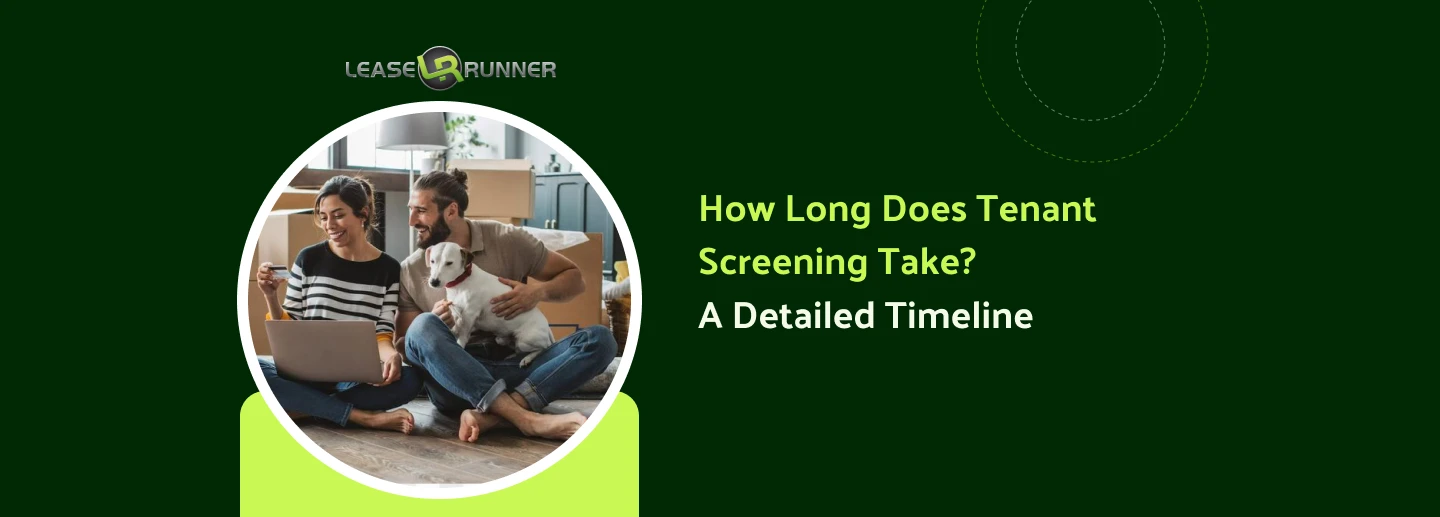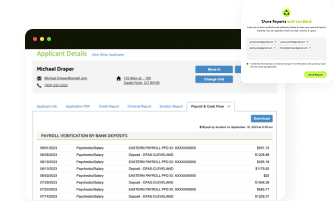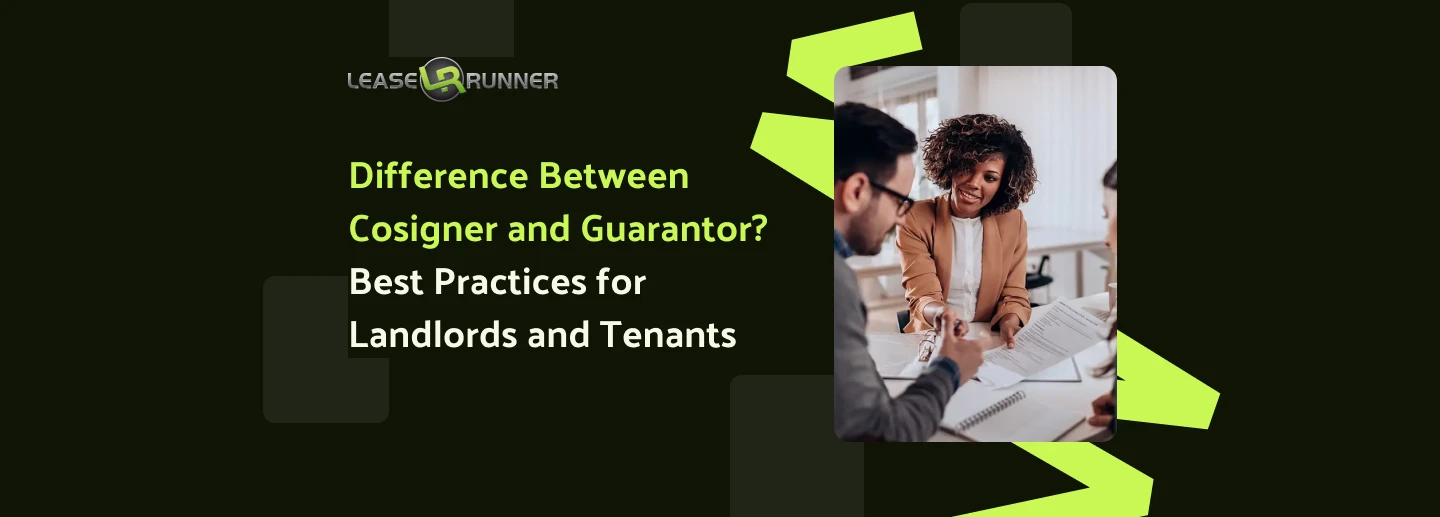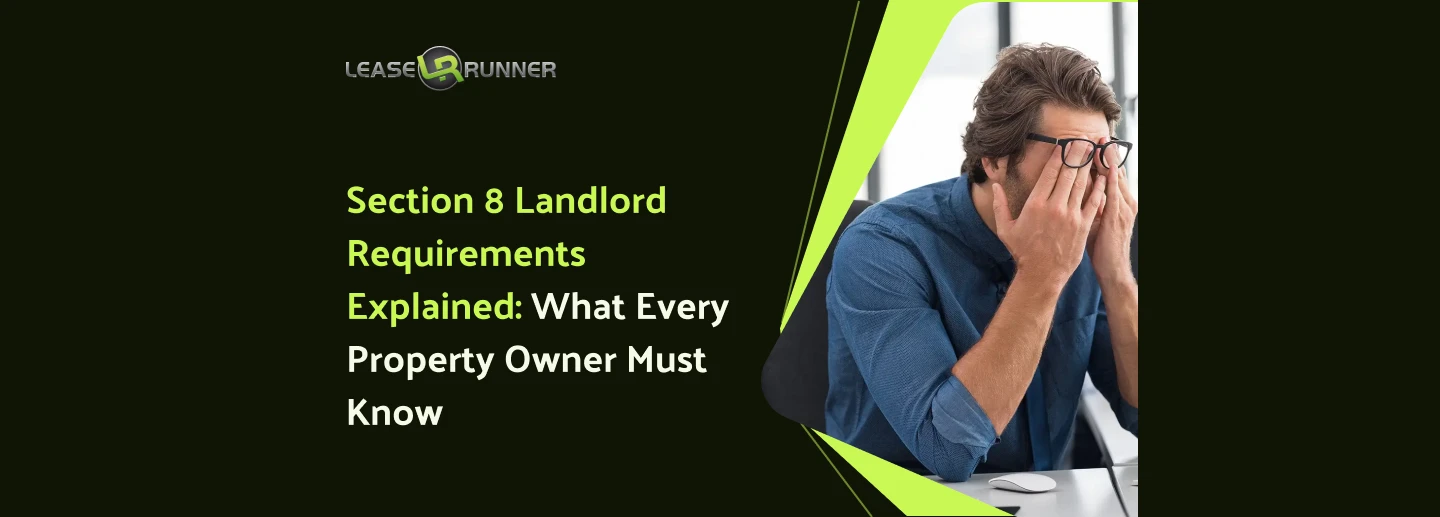You’ve found the perfect place, submitted your application, and now you’re stuck wondering: how long does tenant screening take? Although it may seem like a simple check, tenant screening involves multiple steps that impact timing. Let’s explore the typical timeline and factors that can speed up or slow down the process.

What Affects How Long Tenant Screening Takes?
The length of tenant screening doesn’t rely solely on the software or the landlord; it can vary widely based on a mix of human and logistical factors. Some are within your control, others not so much. Renters often ask how long a rental background check takes compared to a full apartment screening process—the truth is that both depend on these factors:
Tenant Delays in Authorization
One of the biggest bottlenecks in the process is simply waiting for the tenant to authorize the credit and background check. Most landlords can’t begin any part of the screening without this consent. Responding promptly can lead to less than 24 hours approval in some cases.
Completeness of the Tenant Application
A tenant application that’s missing key details (like employment history, SSN, or references) will hit a wall quickly. Incomplete forms require manual follow-up from landlords or property managers, which slows things down.
Responsiveness from Employers and References
Slow responses from employers or past landlords are major causes of screening delays on weekends and holidays. Landlords often need to verify a tenant’s employment and conduct a previous landlord reference check. If employers or references are slow to respond, this step can cause serious lag. One unreturned call can add several days to the total timeline.
Screening Service or Software Used
Not all tenant screening tools are created equal. Some services offer automated, near-instant checks, while others rely on more manual processes. Automated vs manual screening can be the difference between a less than 24-hour approval and a one-week tenant screening. Third-party tenant screening services like LeaseRunner provide faster, automated verification compared to traditional processes.
Depth of Background Check Requested
A basic screening may just include a credit check and public record search, while a more comprehensive one digs into national criminal databases, eviction records, and employment history. The more layers a landlord requests, the longer the rental screening process usually takes.
Rental Market Conditions (Peak Season Delays)
During peak rental seasons (typically late spring through summer), applications surge, which can overwhelm screening services and delay results. Landlords may also take longer to process applications when juggling multiple vacancies. Screening delays on weekends and holidays are also common, since most employers and references are unavailable.
How Long Does Tenant Screening Take On Average?

While some data can be retrieved instantly after tenant authorization, tenant screening 3 to 7 days is common when including full verification steps. Automated tools allow for less than 24 hours approval in simple cases, but full checks often require one week tenant screening.
The timeline largely depends on how many verification steps the landlord requires, how quickly applicants submit complete and accurate information, and how responsive third parties, like employers and former landlords, are during the verification process.
Many landlords and property managers aim to complete the process as quickly as possible to minimize vacancy periods. Some steps, such as pulling a credit report or scanning national databases, can be completed almost instantly using automated tools. However, other parts of the screening require direct human interaction and third-party verification, which naturally take more time.
So when you ask how long does tenant screening take, the safe answer is 24–72 hours, but it can stretch to one week depending on verification steps.
What Is The Average Duration of Each Stage of Tenant Screening?

Tenant screening is a multi-step process, and each phase contributes differently to the overall time it takes to complete. Many applicants also ask what is a screening for an apartment—it’s essentially the same as tenant screening, broken down into the following stages:
Credit Report, Credit Score, and Identity Verification
This is usually the fastest component of the tenant rental screening process. Once a tenant authorizes the screening, credit bureaus provide real-time access to their credit score, detailed report, and verify their identity during the process. You can learn more in our guide on identity proofing vs identity verification.
Most landlords receive this data within minutes through screening platforms like LeaseRunner. Unless there are unusual entries or disputes on the credit file requiring clarification, this stage typically causes no delay.
National & State Criminal History Review
Criminal background checks involve querying state and national databases, and results are often returned instantaneously. Services run searches through government-maintained records, sex offender registries, and other sources. While the process is generally efficient, results may require manual review when inconsistencies appear or names match multiple individuals. Additionally, states vary in how quickly they update or release this information, which can slightly impact timelines.
Past Evictions & Rental History Review
Eviction and rental history checks are typically also instantaneous, but can become hands-on if a record is found. Manual review frequently takes two to four business days.
Screening companies search civil court records for prior evictions and reach out to previous landlords to confirm payment history, property upkeep, and tenancy dates. Delays often arise when past landlords take time to respond, are difficult to reach, or fail to maintain tenant records. In areas where eviction data is not digitized or centrally available, this process may take even longer. Landlords often prepare by reviewing a tenant screening checklist to make sure no key step is overlooked.
Income Verification & Cash Flow Report
Income verification can also be instantaneous if the property manager is using LeaseRunner’s Cash Flow Report, but in general, it is often the longest stage, taking anywhere from 2 to 5 business days.
Landlords want to ensure that tenants can consistently afford rent, so they request recent pay stubs, W-2 forms, tax returns, or bank statements. For employed applicants, this may involve contacting human resources departments directly. Self-employed tenants may need to provide profit-and-loss statements or several months of bank history, which can lengthen the process. When a landlord uses software that integrates directly with a bank (such as Plaid), income data can be verified faster, but not all landlords use such tools.
How Far Back Does Tenant Screening Go?
Most tenant screening reports go back 7 years, though the exact time frame can vary:
- Credit history: When a landlord reviews a tenant’s credit report, they usually see a record of the applicant’s financial behavior over the past 7 to 10 years. According to the Fair Credit Reporting Act (FCRA), most negative credit information (such as late payments, collections, and charge-offs) can be reported for up to seven years. However, bankruptcies may appear for up to ten years, depending on the type filed. Lenders and landlords generally pay the most attention to recent credit activity, particularly the last 12 to 36 months, as it provides a more accurate reflection of current financial habits.
- Eviction records: Eviction records are typically included in tenant screening reports for up to 7 years. These records come from civil court filings and public databases. Landlords often view evictions as a red flag, particularly those that occurred recently. A formal eviction judgment is more significant than a notice or dispute that was resolved without court intervention.
- Criminal background checks: Criminal background checks are one of the most complex and variable parts of tenant screening. The FCRA recommends a seven-year limit on reporting criminal history, but that’s not a hard rule. Many states have their own specific laws that either shorten or extend that window, and the type of offense can also influence how long it remains on record. For example:
- In California, non-conviction records cannot be reported after seven years.
- In Texas, felony convictions may be reported indefinitely.
- In New York, reporting is generally limited to seven years, unless the salary of the job (in employment screening) exceeds a specific threshold.
Although some tenant screening data can stretch back a decade or more, landlords prioritize recent activity. So if you’re wondering how far does rental history go back or how far back do apartment criminal background checks go, the safe rule is usually seven years, depending on state and local regulations screening.
Tips for Tenants to Speed Up the Screening Process

As a renter, you can take steps to avoid screening delays on weekends and holidays and keep the processing time for background checks short.
Tip #1: Submit a Complete and Accurate Application
Before clicking “submit,” take a few extra minutes to thoroughly review every section of your rental application. Incomplete or inaccurate forms are one of the most common reasons tenant screening gets delayed. Double-check your employment dates, salary information, rental history, and personal references. Missed details like a wrong phone number for your previous landlord or a typo in your employer’s contact info can cost you the apartment.
Tip #2: Authorize the Screening Promptly
Tenant screening can’t even begin without your written or electronic consent. Most landlords or platforms will send a separate authorization link via email. Responding within minutes, not hours, can get the ball rolling immediately. Keep an eye on your inbox (and spam folder), initiate processing time background checks immediately, especially in the hours after submitting your application.
Tip #3: Give a Heads-Up to Employers and References
You can help speed things up by letting these contacts know they’ll be hearing from someone soon. That small heads-up means they’re more likely to respond quickly rather than ignore an unexpected call or email. In some cases, a fast response from your references can even shorten your approval time by a full day.
Tip #4: Upload Financial Proof in Advance
Landlords often need to confirm your income to assess affordability. Having your most recent pay stubs, W-2s, or bank statements ready and uploading them along with your application shows initiative and helps avoid back-and-forth delays. If you have pets, some landlords may also ask for pet screening as part of the process.
By following these tips and adding fully proof of income, you’ll reduce stress around how long does tenant screening take.
How Landlords Can Expedite Tenant Screening
For landlords and property managers, how long tenant screening takes can directly impact vacancy rates and revenue. A slow process risks losing high-quality tenants to quicker competitors. Here’s how to keep the rental screening process efficient, professional, and legally compliant.
Use Instant, Digital Screening Tools
Platforms like LeaseRunner offer fast, FCRA-compliant checks with minimal paperwork. Automating the process eliminates manual delays. Portable tenant screening also reduces errors and ensures consistent compliance with tenant screening laws.
Set Clear Expectations and Deadlines
Confusion leads to delays. Make it easy for applicants to succeed by outlining exactly what they need to submit, when you need it, and how it should be formatted (e.g., PDF vs. photo). Send a short checklist that includes financial documents, ID verification, consent forms, and anything else specific to your property.
Establishing a 24–48 hour deadline for providing documents can keep the process on track and reduce the likelihood of no-shows or incomplete applications.
Pre-Screen Before Running Full Checks
Before diving into a full credit and background check, conduct a quick pre-screening via phone or a short online questionnaire. Ask about income level, desired move-in date, pets, and any potential deal-breakers. For Section 8 applicants, landlords should review specific steps in how to screen Section 8 tenants.
Keep Contact Info Ready
Don’t let your process stall because you’re chasing down employers or past landlords. Maintain a quick-reference database of reliable verification contacts (especially for frequent applicants, such as students or tenants in large complexes). Having these on hand enables you to initiate background and employment checks immediately after consent is given, rather than waiting to gather basic info.
What Happens After Tenant Screening Is Completed?

Once the screening process is finished, the landlord carefully reviews the results before making a final decision. Tenants can also check their tenant screening report to review what information the landlord received. If the applicant is approved, they are usually notified by email or phone.
Typical Wait Time for Approval or Denial
Most applicants hear back within 24–72 hours after screening wraps up. However, delays can happen if the landlord is reviewing multiple candidates or needs time to finalize terms. Proactively asking landlords or property managers about expected response times can provide further clarity. More on potential warning signs can be found in red flags in background checks.
For the approved tenant
An approved applicant typically receives a lease agreement for review. This document outlines the rental terms, including monthly rent, security deposit, and lease duration. Some landlords may also request a holding deposit to take the unit off the market until the lease is signed. At this stage, tenants should:
- Carefully read the lease agreement: This is a legally binding document. Make sure you understand all the terms, including the rent amount, due date, pet policy, maintenance rules, and early termination clauses. If you have any questions, ask the landlord for clarification.
- Sign the lease and pay deposits: Once you agree to the terms, you'll sign the lease and pay any required deposits.
- Plan your move: With the lease signed, you can start preparing for move-in day, which includes packing, updating your address, and arranging for utilities (electricity, water, internet).
- Complete a move-in inspection: Before you get the keys, you and the landlord should walk through the property together to document its initial condition. This helps prevent disputes about damages when you move out.
For the denied applicant
If an application is denied, landlords generally notify the applicant in writing. When the decision is based on information from a credit or background report, applicants are entitled to an adverse action notice under the Fair Credit Reporting Act (FCRA).
Steps tenants can take include:
- Ask for the reason: If the landlord doesn't provide a reason, you can politely ask for one. This can help you identify any issues (e.g., low credit score, lack of rental history, or income that didn't meet requirements) so you can improve for the next time.
- Check your credit report: If you suspect a low credit score was the cause, request a copy of your report. Check for any inaccurate or fraudulent information and dispute it.
- Strengthen your application: Use the feedback to improve your profile for future applications. For example, if income was an issue, you might look for rentals with a lower rent. If you lack rental history, you could ask for a professional reference from your employer or a character reference from a former teacher to demonstrate reliability.
Understanding what happens after screening will help you feel more prepared and in control of your apartment search, no matter the outcome.
How Long Should Landlords Wait Before Moving to the Next Applicant?
So, how long should landlords wait before moving on to the next qualified applicant? While there is no federal law that mandates a specific waiting period, the general industry best practice is to wait between 48 to 72 business hours (2 to 3 business days) after the rental screening process is complete.
Extended delays can hurt both the landlord and other potential tenants. A property sitting vacant costs money daily in lost rental income, and keeping qualified applicants on hold too long increases the chance they’ll secure another rental elsewhere. On the flip side, moving forward too quickly might cause a landlord to lose an ideal tenant who simply needed a bit more time to respond thoughtfully.
The key is to establish and communicate clear expectations from the start. Let applicants know during the screening process how much time they will have to respond after being approved.
Final Thoughts
How long does tenant screening take might feel like the longest question in the world when you're waiting for an answer. But now you know, it’s typically just a matter of days. With LeaseRunner, you can proactively save time, reduce stress, and get the lease signed sooner!
FAQs
Q1. How long does income verification take?
Income verification usually takes 1 to 5 business days. If tenants submit recent pay stubs, W-2s, or bank statements upfront, the process can sometimes be completed within a day. However, if the landlord or screening service needs to contact the employer directly, that can add several days.
Q2. How far back do apartment criminal background checks go?
Apartment criminal background checks typically go back 7 years, but it can vary based on state laws and the depth of the screening service used. Some states allow landlords to see criminal convictions beyond seven years, especially for serious offenses. Others have restrictions that limit reporting to more recent records.
Q3. What delays tenant screening the most?
The most common delays in tenant screening come from incomplete applications, delayed consent, or slow responses from employers and references. Other contributing factors include peak rental season (when screening volume is high), outdated contact information, and using slower, manual screening methods instead of digital tools.
Q4. Can a tenant fail screening due to low income?
Yes, landlords often have minimum income requirements (commonly 2.5x to 3x the monthly rent). If a tenant’s verifiable income falls below that threshold, the application might be denied. However, some landlords may accept co-signers or guarantors to move forward with the lease.







